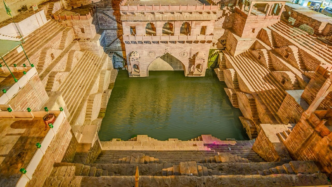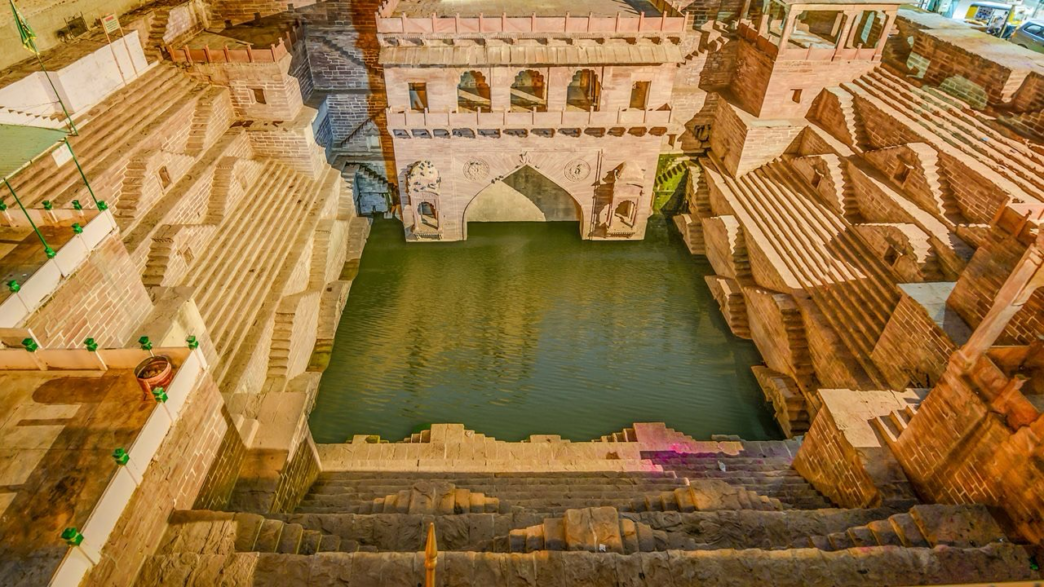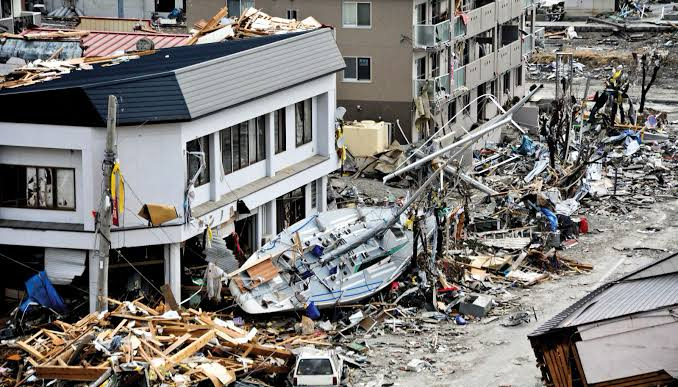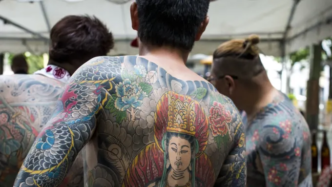Reviving Jodhpur’s Ancient Stepwells for the Modern Era
Once abandoned and neglected, Jodhpur’s historic stepwells are now experiencing a remarkable revival. Toorji ka Jhalra, an 18th-century stepwell, has transformed from a forgotten relic into a vibrant cultural hub. Today, it stands as the centerpiece of Stepwell Square, surrounded by high-end boutiques, artisanal cafés, and heritage hotels.
This urban regeneration movement, led by passionate architects and conservationists, is breathing new life into Jodhpur’s centuries-old stepwells, turning them into social spaces, performance venues, and community centers.
Key Highlights of Jodhpur’s Stepwells Restoration
- Toorji ka Jhalra, built in the 1740s, is now a thriving tourist attraction.
- The JDH Urban Regeneration Project is reviving Jodhpur’s historic spaces.
- Restored stepwells host exhibitions, music festivals, and cultural events.
- Mayla Bagh ka Jhalra features ambient lighting and a floating stage for performances.
- Local and international artists collaborate on textile and heritage projects in these spaces.
The Transformation of Toorji ka Jhalra
From Neglect to Insta-Famous Hotspot
For decades, Toorji ka Jhalra was buried under debris and stagnant water, forgotten by the city. Originally commissioned in the 1740s by Maharaja Abhaya Singh’s queen, the stepwell was an essential water source for Jodhpur’s desert community. However, with the arrival of modern plumbing, it fell into disuse.
Its revival began when Dhananjaya and Nikhilendra Singh, cousins of the Maharaja of Jodhpur, envisioned a complete transformation of the neighborhood. After successfully restoring an 18th-century mansion into Raas, a luxury boutique hotel, they launched the JDH Urban Regeneration Project to restore Jodhpur’s stepwells, gullies, havelis, and bazaars.
Stepwell Square: A New Cultural Landmark
Today, Toorji ka Jhalra is more than just a stepwell; it is the heart of Stepwell Square, a trendy hotspot with:
- Heritage hotels offering luxury stays in restored Rajput-era mansions.
- Boutiques selling handcrafted textiles, jewelry, and art.
- Artisan cafés where visitors can enjoy Rajasthani cuisine.
- Live folk performances that showcase Rajasthan’s rich musical traditions.
Stepwells as Spaces for Art, Culture, and Community
Hosting Exhibitions and Textile Installations
Jodhpur’s restored stepwells are not just tourist attractions; they are platforms for art and heritage preservation.
Recently, Toorji ka Jhalra and surrounding havelis hosted “Surface,” a textile exhibition, where embroidered installations were draped across ancient alcoves. Textile designer Chinar Farooqui reinterpreted Jodhpur’s traditional mehrab (arch) motif in thread, merging architecture and craft.
At Anoop Singh ki Haveli, visitors saw a unique patchwork of quilts from Bihar, Lambani embroidery from Karnataka, and collaborations with Aboriginal artists from Australia—highlighting the global connections of Indian craftsmanship.
Bringing Stepwells Back to Life
Jodhpur-based architect Anu Mridul explains that stepwells were more than just water sources—they were gathering spots for merchants and locals. His team has restored several stepwells, including:
- Mayla Bagh ka Jhalra (built in 1775-76) – now a community space with Wi-Fi and cultural events.
- Naulakha Bawdi – cleaned and revitalized for public use.
- Tapi Bawdi – undergoing restoration to become another key attraction.
Mayla Bagh ka Jhalra: The Floating Stage Experiment
At Mayla Bagh ka Jhalra, a floating stage is being built above the water, creating a unique performance space for music and dance festivals.
Sauryansh Singh from Scwedia Foundation, which maintains the site, shares:
- The stepwell is now a study and relaxation space for students, tourists, and professionals.
- New ambient lighting enhances its beauty at night.
- A three-day festival featuring traditional and contemporary performances is scheduled.
The Future of Jodhpur’s Stepwells
Sustainable Restoration for Tourism and Community Use
Cleaning up a stepwell is just the first step. As Dhananjaya Singh emphasizes, “If a restored space doesn’t have a meaningful function, it will be forgotten again.”
The future of Jodhpur’s stepwells lies in:
- Sustainable restoration efforts that preserve both history and usability.
- Community-driven projects that engage locals and artisans.
- Cultural festivals and exhibitions that attract global visitors.
- Eco-tourism initiatives that highlight Rajasthan’s architectural and water conservation heritage.
Jodhpur’s Stepwells as a Global Example
Jodhpur’s stepwell revival is setting an example for other Indian cities with abandoned water structures, like:
- Chand Baori in Rajasthan
- Agrasen ki Baoli in Delhi
- Adalaj Stepwell in Gujarat
These projects show how historic architecture can be repurposed for modern cultural and social engagement.
Conclusion: The Cultural Renaissance of Jodhpur’s Stepwells
Jodhpur’s restored stepwells are more than historic landmarks—they are thriving cultural hubs. From textile exhibitions and music festivals to community workspaces, these ancient structures are reclaiming their role as vibrant gathering spaces.
As more stepwells are restored, Jodhpur is redefining heritage conservation, proving that the past can seamlessly blend with the present and future.
Source: https://www.incredibleindia.gov.in/en/rajasthan/jodhpur/toorji-ka-jhalra

















